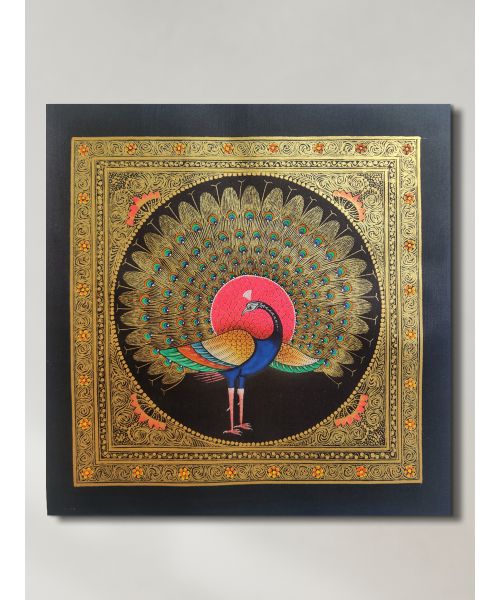Miniature painting is an art form that has been around for centuries, dating back to the medieval era. It involves the creation of small-scale paintings with intricate details, often on surfaces such as parchment, vellum, or ivory. The technique and style of miniature painting have evolved over time, from its roots in medieval manuscript illumination to modern-day portrait miniatures. In this article, we will delve into the history of miniature painting, from its origins to the present day.
Contents
Origins of Miniature Painting
The history of miniature painting can be traced back to the medieval era, where it was used primarily for illuminating manuscripts. Illuminated manuscripts were books that had been decorated with elaborate illustrations and ornamental designs. These manuscripts were created by monks and were used for religious purposes, such as prayer books or liturgical texts.
The earliest surviving examples of illuminated manuscripts date back to the 6th century. However, it wasn’t until the 12th century that the art of illumination began to flourish in Europe. At this time, illuminated manuscripts were not only used for religious purposes but also for secular texts such as poetry, history, and law.

The Rise of Portrait Miniatures
As the art of illumination continued to evolve, artists began to experiment with creating small-scale portraits. These portraits, which were often painted on vellum or ivory, became known as portrait miniatures. The earliest surviving portrait miniature painting is believed to be a portrait of the French king Louis IX, which dates back to the 13th century.
During the Renaissance, portrait miniatures became increasingly popular, particularly in the courts of Europe. Artists such as Hans Holbein the Younger and Nicholas Hilliard were renowned for their skill in creating intricate and lifelike portrait miniatures.
Miniature Painting in the Mughal Empire
The art of miniature painting also flourished in other parts of the world, particularly in the Mughal Empire in India. Mughal miniature painting were heavily influenced by Persian art and often depicted scenes from court life or religious themes. The artists who created these paintings were highly skilled, and their work was characterized by its attention to detail and use of vivid colors.
One of the most famous Mughal miniatures is the Hamzanama, a series of paintings that depict the adventures of Hamza, an Islamic hero. The Hamzanama was commissioned by the Mughal emperor Akbar in the 16th century and is considered to be one of the finest examples of Mughal miniature painting.
Modern Day Miniature Painting
Although the art of miniature painting has its roots in the medieval era, it continues to be practiced today. Modern-day miniature painting often draw inspiration from the techniques and styles of the past but also experiment with new materials and subject matter.
Contemporary miniature painting create works that range from traditional portraits to abstract compositions. Some artists even create miniature painting on unusual surfaces, such as postage stamps or even grains of rice!
Conclusion
The history of miniature painting is a rich and fascinating one, spanning centuries and continents. From its origins in medieval manuscript illumination to modern-day portrait miniatures, this art form has evolved and adapted over time. Whether created for religious purposes or as works of art in their own right, miniature painting have captivated audiences for centuries and continue to do so today.




[…] in sports can be traced back to ancient civilizations, such as Greece and Rome. However, in modern times, women’s sports were not widely accepted and were often met with hostility and […]